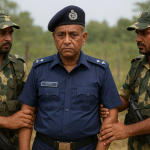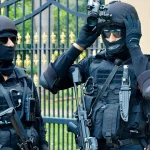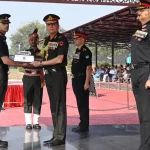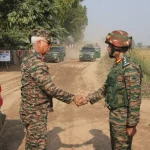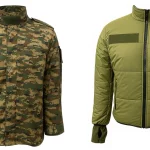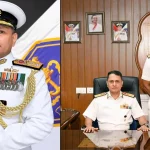To join the ranks of one of the most elite special forces units in the Indian Navy, becoming a Marine Commando (MARCOS) is an aspiration that requires not only great physical prowess but also extensive mental resilience. MARCOS is recognized for its unparalleled operational capabilities, which include real-world missions ranging from counter-terrorism to hostage rescue. Given the unit’s critical role in safeguarding the nation’s interests and responding to maritime threats, understanding how to become a MARCOS Commando—including eligibility criteria, the rigorous selection process, and the extensive training involved—can provide aspiring candidates with vital insights into this commendable journey.
Historical Context of MARCOS
Founded in 1987, MARCOS was established in response to the increasing complexity of maritime threats faced by India. In an era marked by geopolitical tensions, piracy, and asymmetric warfare, the Indian Navy recognized the need for a highly specialized unit capable of conducting covert operations both on land and at sea. Modeled, in part, on the renowned US Navy SEALs, MARCOS set out with a distinct mission: to ensure that the Indian naval forces could effectively respond to unconventional warfare and crises. Over the years, this elite unit has gained a notable reputation for its decisive actions during high-stakes situations, significantly influencing India’s maritime security posture.
The Case for Aspirants: Why MARCOS?
Joining MARCOS is not just a career decision; it involves a commitment to serve a higher purpose. As part of India’s elite special forces, commandos undertake complex missions that often put them in harm’s way. Current and former MARCOS personnel underscore the pride in being part of such a distinguished group, referring to their motto, “The Few The Fearless”, which encapsulates both the exclusivity and the formidable challenges associated with their duties.
Moreover, while the physical rewards—such as a starting salary of approximately ₹35,000 per month—are compelling, many candidates are driven by a sense of duty, adventure, and the opportunity to serve the nation in a remarkable capacity.
Eligibility: Who Can Become a MARCOS Commando?
To embark on the challenging path towards becoming a MARCOS Commando, candidates must first meet specific eligibility criteria:
- Membership in the Indian Navy: Only serving members of the Indian Navy, whether as sailors or officers, are eligible to apply. This ensures that all candidates possess a foundational level of maritime operational knowledge and experience.
- Age Requirement: Generally, candidates should be in their early twenties, which aligns with the physical demands of the selection process.
- Physical Fitness and Mental Resilience: Aspiring commandos must demonstrate outstanding physical health, agility, and mental toughness. This requirement acts as an initial barrier to weed out individuals unprepared for the rigors ahead.
The Selection Process: A Gauntlet of Trials
The selection process for MARCOS is notoriously stringent, with a dropout rate exceeding 80%—a stark indicator of the challenges that lie ahead. Below is a detailed breakdown of the rigorous phases involved:
Phase 1: Pre-Selection and Initial Screening
Candidates undergo a set of demanding physical fitness tests, as well as aptitude assessments, which typically span about three days. These tests evaluate a candidate’s stamina, endurance, and psychological fortitude.
- Physical Fitness Tests: These often include swimming, running, and various bodyweight exercises—designed to assess not only physical capabilities but also determination under stress.
- Mental Toughness: Candidates may also face psychological assessments to ensure readiness for extreme conditions.
Phase 2: Selection Course
The next phase, often dubbed “Hell Week,” is arguably the most grueling part of the selection process. Drawing inspiration from the intense trials faced by Navy SEALs, this week-long series of challenges explores:
- Endurance and Teamwork: Candidates undergo relentless physical training, pushing the capabilities of both mind and body.
- Willpower: Drills are designed to place candidates in harrowing situations, testing their resolve and ability to work cohesively within a team.
Phase 3: Initial Qualification Training (Approximately 10 weeks)
Once candidates successfully navigate “Hell Week,” they enter the Initial Qualification Training, which lasts around ten weeks and covers essential skills:
- Weapons Handling: Comprehensive training in various firearms, emphasizing accuracy and combat readability.
- Close Quarters Battle (CQB): Techniques for combat situations that will require quick, decisive action in confined spaces.
- Parachuting and Combat Diving: This includes a Basic Parachute Course lasting about three weeks at the Indian Army’s Parachute Training School in Agra, along with underwater warfare techniques.
Phase 4: Advanced Training and Probation (Approximately 2 years)
Successful candidates then proceed to the Advanced Training Phase, which can last up to two years. This extensive training encompasses:
- Combat Free-Fall Parachuting: Advanced skydiving techniques for covert insertion into hostile territories.
- Clandestine and Special Reconnaissance Operations: Training focused on stealth and intelligence gathering.
- Amphibious Warfare: Specialization in operations conducted from sea to land.
Each of these elements is critical for preparing commandos to operate effectively across diverse terrains—ranging from deserts to jungles and mountains. Key training locations include:
- High Altitude Warfare School (HAWS): Located in Sonamarg, this facility specializes in mountain operations.
- Counter-Insurgency and Jungle Warfare School (CIJWS): Situated in Mizoram, it focuses on operations in dense forest environments.
- Various operational schools spread across Rajasthan, Arunachal Pradesh, and Karnataka enhance diverse warfare skills through simulated scenarios.
Training Environment: INS Abhimanyu
The main training facility for MARCOS is located at INS Abhimanyu, featuring state-of-the-art resources for comprehensive land, sea, and underwater training.
- Joint Exercises: MARCOS conduct joint missions and exercises with the Indian Army’s Para Special Forces, fostering camaraderie and cross-training.
- Continuous Skills Development: Even after the initial and advanced training phases, commandos continue to hone their skills in specialized areas such as underwater demolitions, sabotage, and counter-terrorism tactics.
Facts & Figures: Consolidating the Knowledge
To further understand the MARCOS experience, here are some pertinent statistics and facts:
| Aspect | Details |
|---|---|
| Eligibility | Indian Navy member, early 20s, volunteer |
| Selection Phases | Pre-selection → Hell Week → Qualification → Advanced Training |
| Training Duration | Initial 7-8 months + ~2 years advanced training |
| Training Locations | INS Abhimanyu, Indian Army schools (Agra, Sonamarg, Mizoram, etc.) |
| Training Includes | CQB, weapons, close combat, parachuting, diving, EOD, mountain/wilderness warfare |
| Dropout Rate | Over 80% |
| Initial Salary | ~₹35,000/month + allowances |
| Founded | 1987 |
| Motto | “The Few The Fearless” |
Challenges Faced by Aspiring Commandos
Joining MARCOS presents a plethora of challenges that extend beyond the initial selection phase. The training environment itself imposes not only physical strains but also requires a considerable investment in mental health management strategies to counter the inevitable stresses commandos will face.
- Burnout and Mental Health: Given the extreme demands of the program, there is a risk of burnout among candidates, which can negatively impact performance and overall wellbeing.
- Coping Mechanisms: Developing resilience through rigorous training, peer support, and professional mental health resources plays a crucial role in ensuring candidates can endure the psychological pressures of the job.
Future Trends: The Evolution of MARCOS
As global threats evolve, so too will the role and capabilities of MARCOS. The increasing prevalence of cyber threats and asymmetric warfare has prompted the unit to incorporate technology and intelligence more comprehensively into their operations.
- Technological Integration: Future commandos might see enhanced tools for surveillance and reconnaissance, emphasizing information warfare alongside traditional combat skills.
- Cross-Training with International Units: Participating in exercises with allied nations could further broaden operational effectiveness, introducing lessons learned from advanced military practices globally.
Conclusion
Becoming a MARCOS Commando is more than just fulfilling the physical requirements; it is a test of character, resilience, and an unwavering commitment to service. The journey entails overcoming rigorous selection trials, extensive training, and continuous personal development. Considering the world continues to change rapidly, the importance of such elite units like MARCOS will only grow. For those who are willing to accept its challenges, the rewards extend far beyond financial gains—they encompass the freedom to serve in one of the most prestigious roles imaginable, contributing significantly to national security.
For individuals interested in pursuing this incredible path, continual self-improvement, rigorous training, and mental fortitude will be essential. For aspiring candidates, reputable resources such as SSBCrack and SSBCrackExams offer invaluable guidance and preparatory materials, providing support every step of the way in this demanding yet rewarding journey.
Each candidate must remember: to be a MARCOS Commando is not simply about becoming one of the few; it’s about embodying the fearless spirit that defines this elite group.








